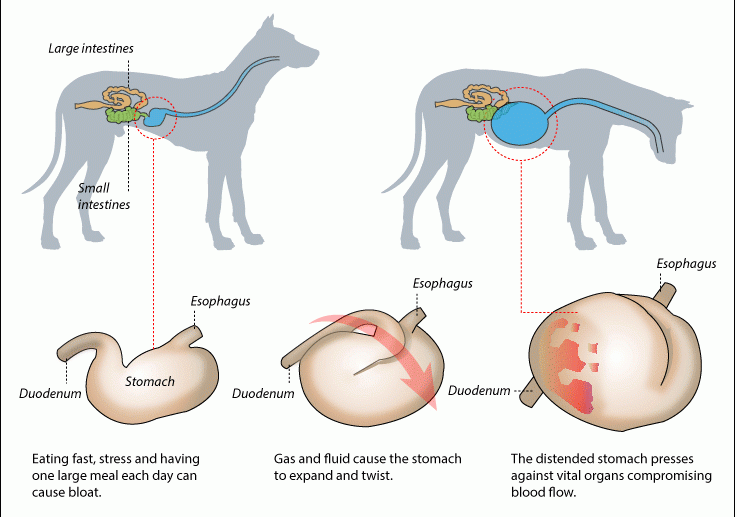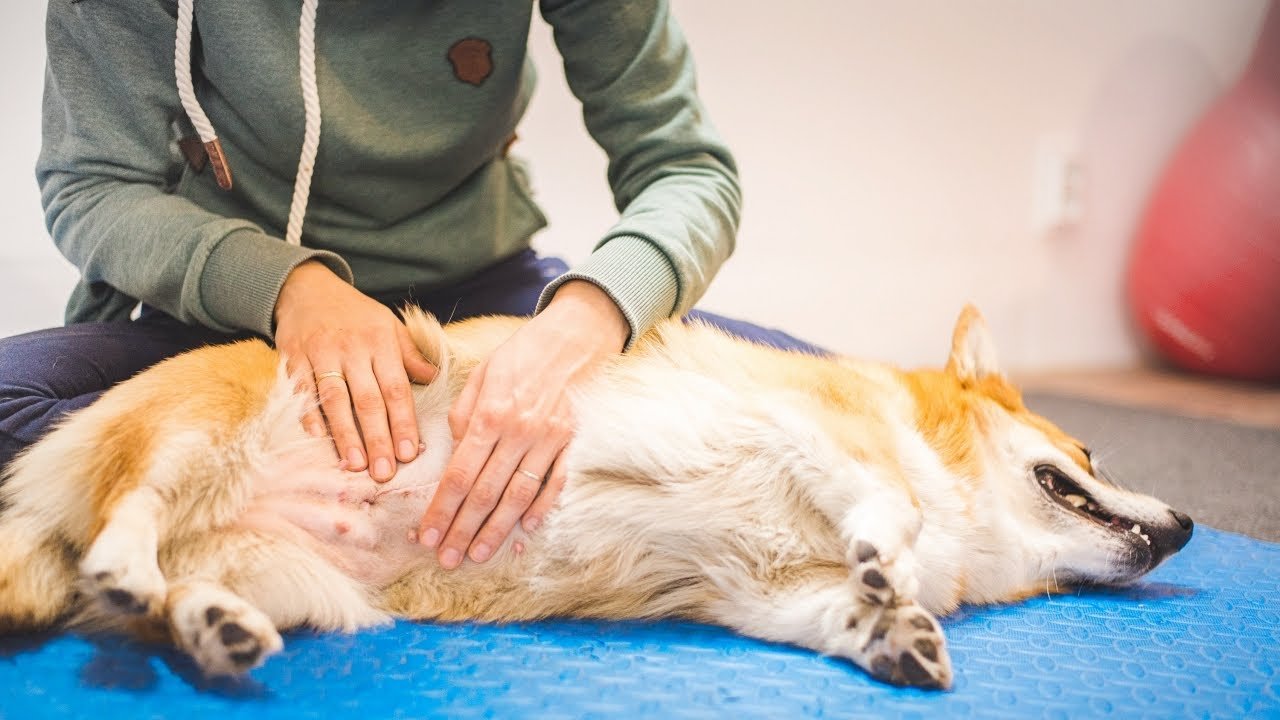Have you ever wondered if Chihuahuas can get bloat? Well, you might be surprised to learn that even though they are small in size, Chihuahuas are indeed susceptible to this dangerous condition.
Bloat, or Gastric Dilatation-Volvulus (GDV), occurs when a dog’s stomach becomes distended and twists, potentially cutting off blood flow and trapping gas. While large and deep-chested breeds are commonly associated with bloat, smaller breeds like Chihuahuas can also be affected. This highlights the importance of understanding the risk factors and symptoms associated with bloat, regardless of a dog’s size.
Understanding the risk factors associated with bloat is crucial for all Chihuahua owners. Factors such as eating too quickly, a genetic predisposition, or a history of GDV in the family can increase the likelihood of bloat in this breed. Observing symptoms like restlessness, unsuccessful attempts to vomit, distended abdomen, or signs of distress should never be ignored. If your Chihuahua exhibits any of these signs, it is essential to seek immediate veterinary care to increase the chances of successful treatment and a positive outcome. By staying informed and proactive, we can help protect our Chihuahuas from this potentially life-threatening condition.

Can a Chihuahua Get Bloat?
In this article, we will explore the topic of whether a Chihuahua can get bloat. Bloat, also known as gastric dilatation-volvulus (GDV), is a serious condition that can affect dogs, particularly those with deep chests. Chihuahuas are small dogs, commonly known for their energetic and alert nature. However, their unique physical characteristics pose certain risks, and it is important to understand whether they are prone to developing bloat. Read on to discover more about this condition and its potential impact on Chihuahuas.
Understanding Bloat in Dogs
Bloat is a life-threatening condition characterized by the rapid swelling of the stomach due to gas or fluid accumulation. In some cases, the stomach can twist, leading to a condition called gastric dilatation-volvulus (GDV). Bloat and GDV can be extremely painful for dogs and can lead to severe complications if not treated promptly.
While deep-chested breeds like Great Danes and Dobermans are more commonly affected by bloat, it is essential to acknowledge that any dog can develop this condition, including Chihuahuas. Although Chihuahuas have a petite frame, their unique body shape, with a small chest and abdominal cavity, can increase the risk of bloat. Therefore, it is crucial for Chihuahua owners to be aware of the signs and symptoms and take preventative measures to keep their furry companions safe.
Recognizing the Symptoms
Identifying the signs of bloat is crucial to ensure early intervention and increase the chances of a positive outcome. Some common symptoms of bloat in dogs include:
- Unsuccessful attempts to vomit
- Distended abdomen or bloating
- Restlessness and pacing
- Excessive drooling
- Weakness or difficulty standing
- Rapid breathing
- Pale gums
If you notice any of these symptoms in your Chihuahua, it is important to seek immediate veterinary care. Time is of the essence when it comes to bloat, as the condition can rapidly worsen and become life-threatening within a matter of hours.
The Risk Factors for Chihuahuas
While all dogs are susceptible to bloat, certain factors can increase a Chihuahua’s risk. Understanding these risk factors can help you take appropriate measures to prevent the occurrence of bloat in your Chihuahua. Some common risk factors include:
- Eating too quickly
- Consuming large meals in one sitting
- Exercising vigorously before or after meals
- Having a family history of bloat
- Being a nervous or anxious dog
Chihuahuas are known to have a ravenous appetite, and their small size may lead them to consume meals quickly. This can contribute to the build-up of gas in the stomach and increase the risk of bloat. To minimize the risk, consider dividing their meals into smaller portions or using slow-feeders specifically designed to slow down eating. Additionally, it is advisable to avoid strenuous exercise around meal times and provide a calm environment for your Chihuahua to relax after eating.
Prevention and Treatment
Preventing bloat in Chihuahuas involves a combination of proactive measures and vigilant monitoring. Here are some tips to help reduce the risk:
- Feed your Chihuahua small meals throughout the day instead of one large meal.
- Invest in slow-feeders or puzzle toys that encourage slower eating.
- Avoid intense physical activity immediately before or after meals.
- Ensure a calm and stress-free environment during mealtime.
- Regularly monitor your Chihuahua for any signs of discomfort or distress.
If your Chihuahua does develop bloat, time is vital. Contact your veterinarian immediately for guidance. Treatment for bloat may involve decompression of the stomach, administration of medications, and, in severe cases, surgery to resolve the gastric torsion. The outcome greatly depends on early intervention and the overall health of the dog.
Conclusion:
While Chihuahuas may be at a lower risk compared to deep-chested breeds, they are not exempt from the possibility of developing bloat. It is crucial for Chihuahua owners to educate themselves about the condition, recognize the symptoms, and take preventative measures to ensure the health and well-being of their beloved pets. By being proactive and vigilant, you can minimize the risk and provide the best care for your Chihuahua.
Key Takeaways: Can a Chihuahua Get Bloat?
- A Chihuahua can indeed get bloat, a serious condition that affects the stomach.
- Bloat in Chihuahuas can be life-threatening and require immediate veterinary attention.
- Feeding small, frequent meals and avoiding rapid eating can help prevent bloat in Chihuahuas.
- Chihuahuas with a family history of bloat may be more prone to developing the condition.
- Understanding the symptoms of bloat, such as a distended abdomen and difficulty breathing, is crucial for early detection and treatment.
Frequently Asked Questions
Curious about whether Chihuahuas can get bloat? Here are some commonly asked questions on the topic.
1. Can Chihuahuas get bloat?
Yes, Chihuahuas can indeed get bloat. Bloat, also known as gastric dilation-volvulus (GDV), is a serious and life-threatening condition that can affect dogs of all sizes, including Chihuahuas. It occurs when the stomach fills up with gas, fluid, or food, and then twists, blocking the passage of anything in or out of the stomach.
Chihuahuas are actually considered a high-risk breed for bloat, along with other small and toy breeds. This is because they often have a deep chest and a compact body build, which can make them more prone to the condition. It’s important for Chihuahua owners to be aware of the signs and risk factors and to seek immediate veterinary care if they suspect their Chihuahua may have bloat.
2. What are the symptoms of bloat in Chihuahuas?
The symptoms of bloat in Chihuahuas can vary, but some common signs to watch out for include a swollen or distended abdomen, unproductive vomiting or retching, restlessness, excessive salivation, and difficulty breathing. Chihuahuas with bloat may also exhibit signs of pain, such as a hunched posture, whining, or reluctance to move.
It’s important to note that bloat can progress rapidly and become a life-threatening emergency. If you suspect your Chihuahua may have bloat, it’s crucial to seek immediate veterinary attention. Time is of the essence when it comes to treating bloat, as the condition can quickly lead to more severe complications like organ damage or even death.
3. Why are Chihuahuas prone to bloat?
Chihuahuas, along with certain other small and toy breeds, are considered high-risk for bloat due to their unique anatomy. Their deep chests and compact bodies can create a situation where the stomach has more room to move and potentially twist. Additionally, factors like a high-stress environment, a history of gastrointestinal issues, or eating too quickly can further increase the risk of bloat in Chihuahuas.
While the exact cause of bloat is not fully understood, it is thought to involve a combination of genetic and environmental factors. Chihuahua owners should take preventive measures, such as feeding multiple small meals throughout the day, using slow-feed bowls or puzzle toys to slow down eating, and avoiding stressful situations that may trigger bloat.
4. How is bloat in Chihuahuas treated?
When a Chihuahua is diagnosed with bloat, immediate veterinary intervention is crucial. Treatment typically involves stabilizing the dog’s condition, which may include administering intravenous fluids, relieving pressure in the stomach through a tube or puncture, and addressing any other complications that may have arisen due to the bloat.
In severe cases, emergency surgery may be necessary to untwist the stomach and correct the condition. This procedure is called a gastropexy, which involves securing the stomach to the abdominal wall to prevent future episodes of bloat. After treatment, it’s important to carefully monitor the Chihuahua’s recovery and make any necessary changes to their lifestyle to reduce the risk of bloat recurrence.
5. Can bloat in Chihuahuas be prevented?
While there is no guaranteed way to prevent bloat in Chihuahuas, there are steps you can take to reduce their risk. These include feeding multiple small meals throughout the day instead of one large meal, using puzzle toys or slow-feed bowls to slow down eating, avoiding stressful situations, and ensuring your Chihuahua has a calm and relaxed environment.
It’s also important to work closely with your veterinarian to establish a preventive care plan for your Chihuahua. This may include regular check-ups, monitoring for any underlying health conditions that could increase the risk of bloat, and discussing the possibility of a prophylactic gastropexy surgery, which can be done to reduce the risk of bloat in high-risk breeds.

Overall, the objective is for readers to grasp the main points of the article in just two paragraphs. With these guidelines in mind, we can effectively communicate ideas and leave the reader with a clear understanding of the article’s key points.
